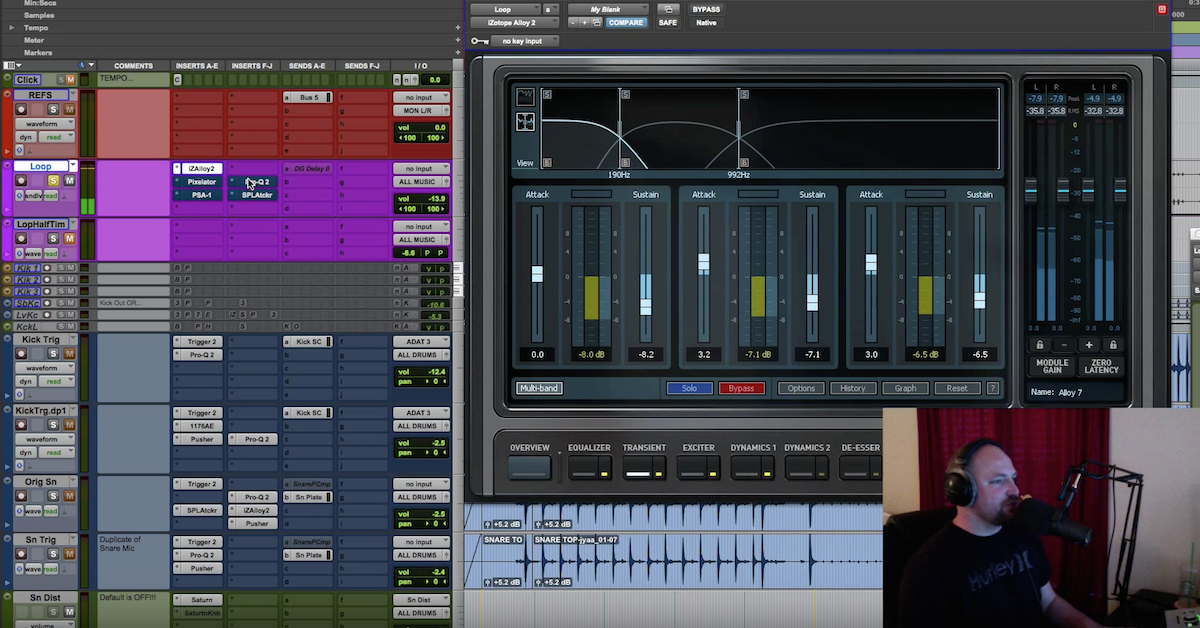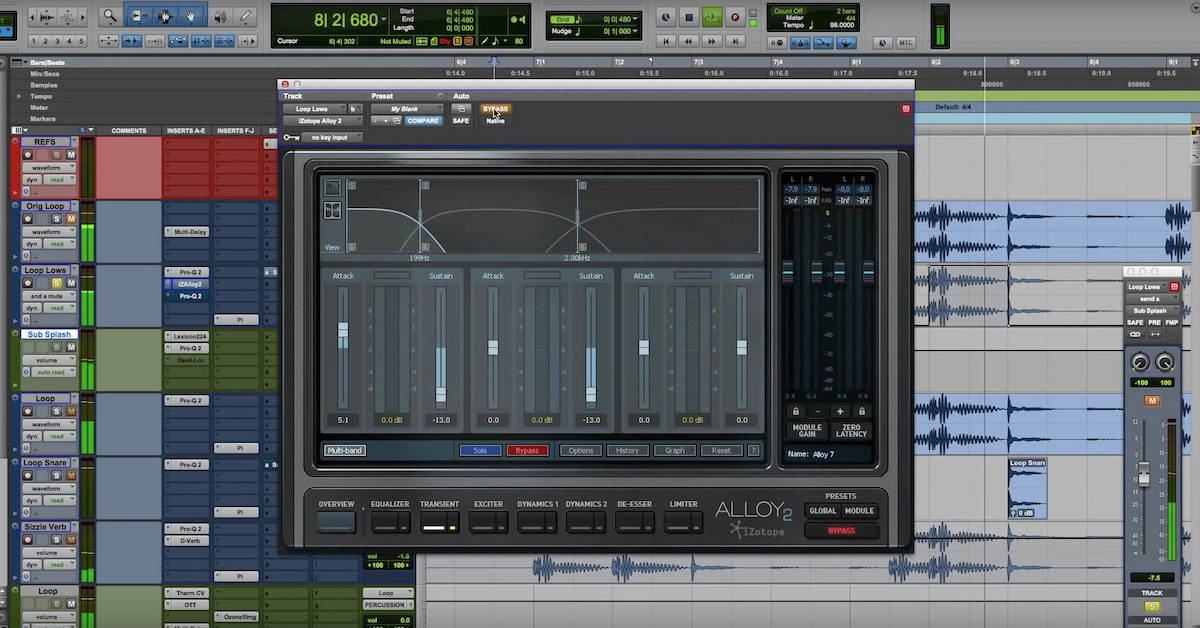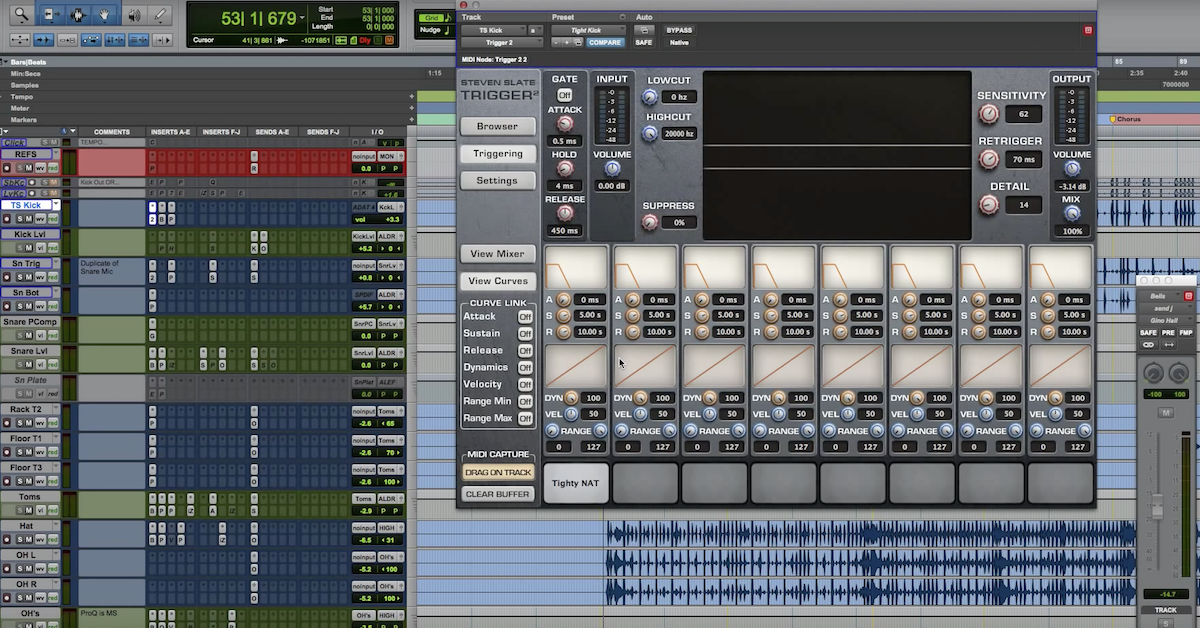Tips for Mixing the Low End of Drum Loops
So I’m gonna pull open a track I’ve been given recently by my new friend Tim Moore out of California, and his wife has got a beautiful voice, her name is Dasha Moore, the artist. And the song is called “My God Is Big.” Super stoked for them, this song is incredible and I’m excited to share it with you, so I’m gonna hit play from the top, we’re gonna here kind of the intro, the loops, how they’re working together, and then I’ll dive in and show you what I’m doing.
[song]
Alright, cool. So diving right in we’ve got 3 loops in this song. And they’re all doing different things so they work really nicely together — I’m gonna solo those for you. But first we’re gonna bypass my processing. And here’s what I was given.
[unprocessed loops]
Cool. So in these loops we’ve got some low end stuff going on. We’ve got one, I hear kind of a soft fluffy 808 wannabe kind of thing going on. The other thing I hear is a tighter, kind of punchy kick that — I say punchy — but it wants to be punchy. And those two aren’t working really well together for me and it doesn’t fit with the song the way that they’re going. So what I did was I took the liberty like I often do, I’ll take risks whenever clients send me work. But I wanted to redesign the low end, so instead of going with that, what I did is I approached these clicks. I’m gonna play one more time actually without my processing, I’ll add my processing in, and then we’ll go over the kicks.
[loops with and without processing]
Cool. So what I did was I pulled open and in each of these I applied Alloy 2’s multi band transient designer — I love this thing, using it on all kinds of stuff now. You can control the bands, you’ve got the 3 to play with. In this case I increased the attack and everything, removed the sustain. I wanted it to be tighter, I wanted to feel a bit of movement within it. And I did that for all 3 to tempo. And I sucked all the low end out of everything, so I’ve got a couple of EQ’s on here, I’m pulling all the low end out. I don’t want any of that because I’m going to redesign it.
The first thing I heard was the punch kick, so I pulled open my new favorite plugin for kicks. For Pro Tools users, you have to have something like Bluecat’s Patchwork to pull in VST’s. They don’t make an AAX yet — to my knowledge I think they still don’t. So Nicky Romero’s KICK from Sonic Academy. Incredible plugin. You can take your kicks — I’ll probably do a whole tutorial just on this plugin — but you can design your own kicks. So you can take the attack, the sustain, the release — you can control of that — you can set it the way you want it. You can increase or decrease your length, you can automate this thing. There’s all kinds of great craze stuff you can do. You can pick your click sounds, you can drive it, blah blah blah.
The point in this tutorial is I wanted a kick that would fit this track better than what was in the loops. So I created this guy, and this is what it sounds like.
[processed loops with punchy kick]
And then to top it off, we had that kind of sub pulsing 808 wannabe track underneath. So I recreated that one as well. Let’s get rid of this guy and pull open another instance of KICK. And this thing is incredible, again, I’m just going crazy over it, but I just boosted the sustain all the way up, the length of it is at 3000 it’s at max, and this is what I got with it.
[processed loops + punchy kick + sub 808]
This is a nice big beautiful low end that I think I may have tweaked a little bit with some EQ, but nothing too crazy. There I gave it a little 100, and pulled out a little mud, and then a little bit at 30 just because it felt good. You can take note of that, but a couple things going on in this one. Let’s here it one more time in the track. Here’s without processing. Cool. And then now we’re going to try to get this back in quickly. But I don’t have them selected and I’m using the shortcut. And with my kicks.
Very cool. So, what do I want you to learn from this? For one, you gotta be careful because if you’re working with new clients, producers, sometimes you’re stepping on their toes when you’re gonna redesign their kicks or change out their loops. So make sure you get permission, or if you’re gonna take that risk, be prepared that they may not like it and you may have to go in and fix what you’ve done. But the main thing I want you to get from this is don’t be afraid to take risks. Go in, suck the low end out, listen to the pattern of the kick, and see if you can do better for the track. If the track is calling for something a little bit more bold, a little bigger, tighter, punchier. Whatever the case may be, don’t be afraid to go in and recreate that yourself.
And that’s the moral of the story. So anyways hope you guys are learning something from that. Keep the questions coming: david[at]davidglennrecording.com. So much stuff on the way. We just had a baby (my wife and I) and we’re super tired but I’m back at making these tutorials, I’m super excited, and lot’s of great stuff to come. So we’ll catch you guys on the next one.





